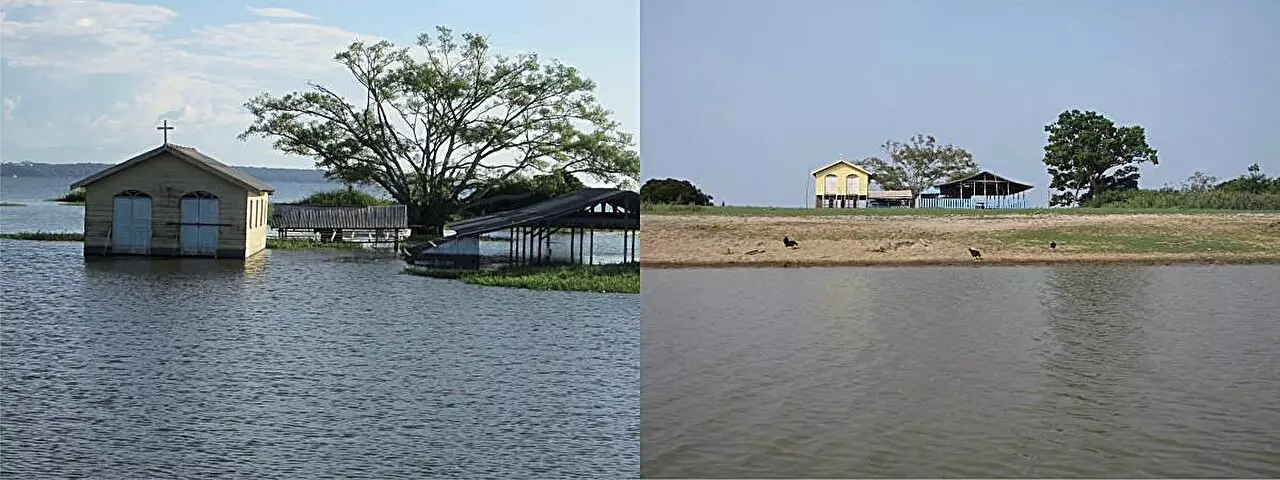As climate change continues to escalate, the Amazon Rainforest faces increasing risks from extreme temperatures and varying humidity levels. Recent research conducted by a team from the University of São Paulo (USP) sheds light on the potential consequences of these changes, particularly in terms of methane production and absorption within this vital ecosystem. With a significant portion of the Amazon floodplains projected to experience exacerbated conditions, the study published in the journal Environmental Microbiome presents alarming data about the future of methane cycling in the region.
The Amazon’s floodplains cover over 800,000 square kilometers, which accounts for about 20% of the rainforest area. These regions are critical as they transform organic matter into methane through microbial activity and are responsible for significant global greenhouse gas contributions. Data reveals that up to 29% of global wetland methane emissions can be attributed to the Amazon’s floodplains. Consequently, the findings emphasize the dual role of this biome: while it serves as a source of methane in flooded conditions, its upland forests function as critical sinks that capture the gas from the atmosphere.
The study spearheaded by researchers like Júlia Brandão Gontijo examined how increasing temperatures and varying moisture levels could rearrange the dynamics of methane production in the Amazon ecosystem. The research involved a meticulous 30-day experiment that involved soil samples from both floodplains and upland forests in Santarém and Belterra, located in Pará, Brazil. Samples were exposed to extreme temperatures of 27 °C and 30 °C, to mimic projected climate change scenarios, while quantifying microbial responses through genetic sequencing and quantitative PCR.
Notably, while the methane emission patterns in the floodplains remained stable, the number of methane-producing microorganisms surged, hinting at a worrisome trend in microbial resilience. In stark contrast, upland forest soils reported a staggering 70% decline in methane consumption during hot, dry periods, showcasing their vulnerability to changing climate conditions.
The ramifications of these findings extend far beyond the immediate study. The fact that the floodplain microbiome appears capable of adapting to climate extremes poses critical concerns. However, the upland forest microbiome shows significant sensitivity to climatic shifts, presenting a risk of disrupting the delicate greenhouse gas equilibrium in the Amazon. This alteration could have global consequences given the Amazon’s role as a critical buffer in the Earth’s climate system.
Dr. Tsai Siu Mui, Gontijo’s thesis advisor, highlighted that atmospheric methane levels have surged by approximately 18% over the past four decades, a trend that raises urgent questions about the adaptive capacity of Amazonian ecosystems. Methane, a potent greenhouse gas with a far greater impact on warming than carbon dioxide in the short term, necessitates attention if we hope to mitigate climate change.
The connection between climate change and microbial dynamics underscores the pressing need for effective conservation and management strategies. Gontijo and her team emphasize that understanding how changes in temperature and humidity disrupt methane cycling is crucial for formulating policies that protect this irreplaceable biome.
The researchers identified various methanotrophic microorganisms within the Amazon that utilize methane for energy, thereby possessing potential to naturally offset rising methane emissions. This insight opens avenues for future research aimed at enhancing these microbial populations’ efficacy in carbon cycling as part of broader ecological strategies.
Moving forward, Gontijo and her colleagues plan to expand their investigations through field experiments and laboratory studies to delve deeper into methane cycling dynamics. This comprehensive approach will not only refine their understanding of microbial responses but also aid in the development of targeted strategies to mitigate climate-induced threats to the Amazon Rainforest.
As national and global leaders grapple with climate change hurdles, the insights derived from such research will be essential in shaping public policy. They reflect the urgency of protecting not just biodiversity but also ensuring that ecosystems like the Amazon can continue to function as carbon sinks rather than sources. Only through a commitment to rigorous scientific inquiry can we anticipate and respond to the challenges posed by climate change, safeguarding one of our planet’s most critical environmental treasures.


Leave a Reply